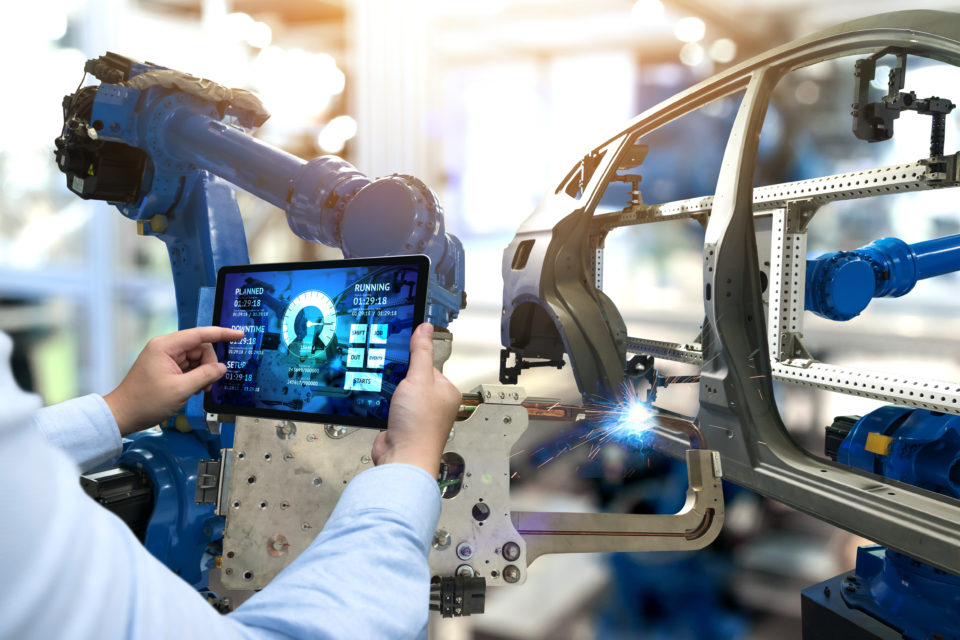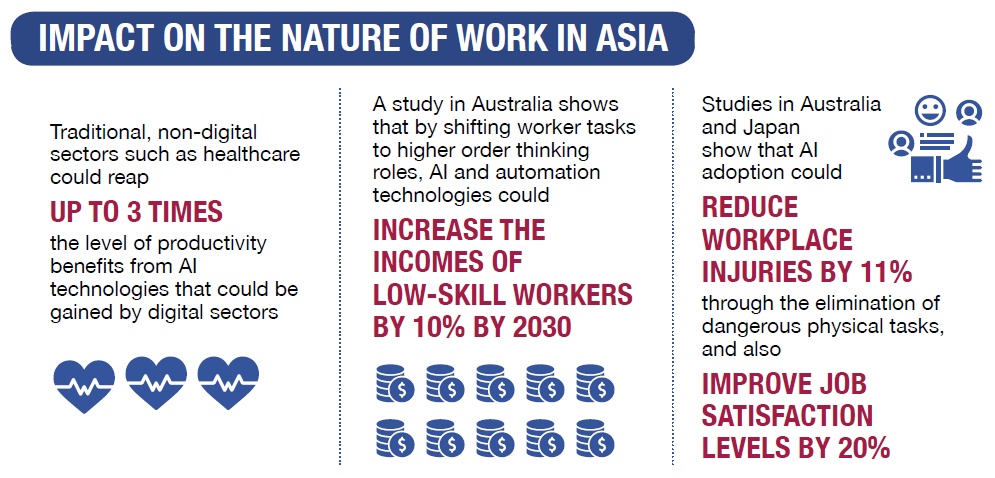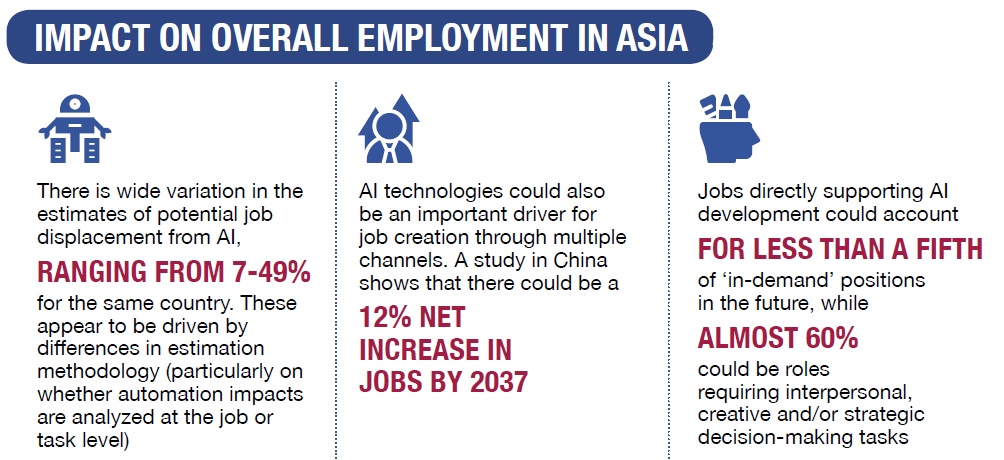Maximizing the workplace benefits of new technologies
How we adopt – and adapt to – artificial intelligence in the workplace will be crucial to the future of our region’s economic growth and the very nature of employment.
The 4th Industrial Revolution is already bringing many changes. And, policymakers, employers, and civil society organizations across the Asia Pacific are looking for innovative and inclusive ways to maximize the opportunities created by AI.
They also want to manage the challenges. Among these is the need to understand what the evidence is telling us. In particular, governments want to see what the likely outcomes are so that they can invest today in policies to re-skill for an AI-driven future.
To get a clearer view of what’s happening across this fast-changing landscape and inform public policies, Microsoft Asia has just released a review of multiple pieces of research on AI’s likely impacts for jobs and skills. It analyzes the challenges that could prevent some of Asia Pacific economies from harnessing the full benefits of AI, and it sets out action points to help capture these gains.
The report surfaced both optimism and reservations about AI’s effects across Asia Pacific labor markets. It found that:
- AI has the potential to have positive impacts on worker productivity, incomes, and satisfaction.
- The potential for AI technologies to create new jobs has received limited focus in the media; however, some existing research literature suggests the positive impacts on the labor market could be significant.
- New jobs will be created to support the adoption of AI technologies across sectors. Such jobs are harder to predict, as they are likely to be jobs that do not exist today. In 2022, jobs that directly support AI development could account for less than a fifth of in-demand positions, while 60% could require interpersonal, creative or decision-making skills.
- While AI is likely to create more jobs than it displaces in Asia Pacific, disruption is likely, and there may be net losses of jobs concentrated in specific sectors. In that context, displaced workers could face different outcomes depending on their access to training and new economic opportunities.
- The use of AI to match workers to jobs could have significant economic impacts: Estimates point to a potential impact across Asia of US$500 billion in GDP by 2025, creating additional employment of 31.5 million workers.
- To fully harness the potential benefits and mitigate the risks of AI for jobs and work in Asia Pacific, an appropriate action agenda must address the unique challenges the region faces.
- Many Asian governments, businesses, and civil society organizations are pursuing innovative approaches to tackle these challenges, and there is a significant opportunity to learn from each other.
The review examines the validity of a long list of enduring perceptions about AI’s impacts. For example, some might believe that workers’ wages will decline as AI displaces more work tasks. However, existing research suggests that wages could instead rise through various ways as new technologies spread. For instance, a study in Australia showed that retraining 75% of displaced workers could cut future potential increases in income inequality by two between 2016 and 2030. Similarly, it challenges the notion that AI’s largest productivity gains will be enjoyed by high-income countries. The report instead points to predictions that middle-income economies, such as The Philippines, stand to reap the highest productivity gains.
It also takes on suggestions that digital sectors will benefit the most from AI, saying that traditional, non-digital sectors such as healthcare or energy are expected to gain up to three times the productivity benefits.
The report suggests policymakers and industries both stimulate greater AI adoption and establish re-skilling programs. In this environment, workers should be valued for their ongoing skills and not just for their formal educational qualifications. It also emphasizes the need for an overall inclusive approach that extends the benefits of AI to all workers.
The review comes up with nine high-level action points to help make the most of AI’s workplace impact:
- Ensure strong and even adoption of AI across companies and workers.
- Build awareness of re-skilling benefits, critical skills, and training opportunities.
- Incentivize and encourage employers to retrain their workers.
- Foster close collaboration between governments, industry, and civil society to create relevant and effective nation-wide retraining frameworks.
- Ensure the relevance of educational curriculums to emerging skill needs.
- Encourage a focus of skills rather than just formal qualifications in both recruitment and national markets strategies.
- Build inclusive models that allow underserved groups to benefit from AI.
- Create social protection mechanisms for works taking of flexible forms of labor.
Click here to read a text of the full report.




